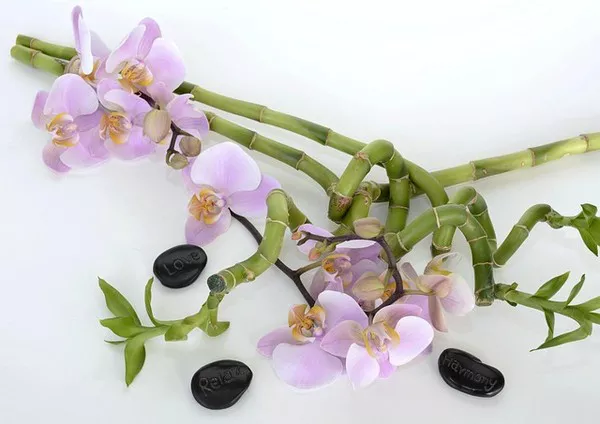Flowers have been admired for their exquisite beauty and used to convey emotions and messages for centuries. Whether it’s a bouquet from a special occasion or a handful of wildflowers picked during a nature walk, the desire to preserve their vibrant colors and delicate forms is a common sentiment. Drying flowers is a time-honored technique that allows us to extend the lifespan of these botanical wonders, enabling us to enjoy their beauty long after they’ve been plucked from the garden. In this comprehensive guide, we will delve into the art and science of drying flowers, exploring various methods and offering expert tips for successful preservation.
The Importance of Proper Drying
Drying flowers is not merely a utilitarian endeavor; it is an art that requires patience, precision, and a deep understanding of botanical structures. Proper drying not only maintains the aesthetic appeal of the flowers but also prevents decay and mold growth. When done correctly, dried flowers can last for months, and sometimes even years, serving as a testament to nature’s enduring elegance.
Choosing the Right Flowers
The first step in the drying process is selecting the right flowers. Not all flowers are suited for drying, and some varieties yield better results than others. Flowers with sturdy petals, such as roses, lavender, and hydrangeas, are prime candidates for drying. It’s important to choose flowers that are at their peak, as those that are slightly past their prime may not dry as well or retain their colors as vibrantly.
Methods of Drying Flowers
Air Drying
Air drying is perhaps the oldest and simplest method of preserving flowers. It involves hanging the flowers upside down in a warm, dry, and well-ventilated area. This method works best with flowers that have strong stems and low moisture content. Here’s how to do it:
Prepare the Flowers: Remove any excess foliage from the stems, as leaves contain moisture that can hinder the drying process.
Bundle the Flowers: Group several flowers together and secure them with a rubber band or a piece of twine. Keep the bundles small to ensure proper airflow.
Hang Upside Down: Attach the bundles to a hanger or a string and hang them upside down in a dark, warm room. The darkness helps to preserve the flower’s color.
Patience is Key: Allow the flowers to air dry for two to three weeks, or until they are completely dry and crispy to the touch.
Pressing
Pressing is a technique that involves flattening flowers between absorbent materials, such as blotting paper or parchment paper, and applying pressure to remove moisture. Pressed flowers are often used for crafts, artwork, and decorative purposes. Here’s how to press flowers effectively:
Flower Selection: Choose flowers that are relatively flat and not too thick, as thicker petals may not press well.
Pre-Pressing: Place the flowers between two sheets of absorbent paper and press them within the pages of a heavy book. Leave the flowers untouched for about a week to slightly dry them.
Pressing Proper: Once pre-pressed, carefully arrange the flowers on a piece of absorbent paper within the pages of a book. Close the book gently and place additional weight on top, like more books or heavy objects.
Time and Patience: Leave the flowers pressed for two to four weeks, replacing the absorbent paper periodically to ensure complete drying.
Using Silica Gel
Silica gel is a desiccant that absorbs moisture quickly and efficiently. It is particularly useful for preserving the shape and color of delicate flowers. Here’s how to use silica gel:
Prepare a Container: Choose an airtight container that is large enough to accommodate the flowers without crowding.
Layering: Place a layer of silica gel at the bottom of the container. Trim the flower stems and lay the flowers gently on top of the gel.
Gentle Covering: Carefully pour more silica gel over the flowers, ensuring that they are completely covered. Gently shake the container to allow the gel to settle between the petals.
Sealing: Seal the container tightly and leave it undisturbed for about a week. Check the flowers periodically, and once they are dry, carefully remove them from the gel.
Expert Tips for Successful Drying
Timing is Crucial: Harvest flowers for drying just before they reach full bloom, when they are at their peak beauty and have the lowest moisture content.
Avoid Humidity: Choose a drying location with low humidity, as high moisture levels can hinder the drying process and promote mold growth.
Use Clean Tools: Ensure that all tools, containers, and surfaces used for drying flowers are clean and free from contaminants that could lead to decay.
Be Patient: Rushing the drying process can result in wilted or discolored flowers. Proper drying takes time, but the results are worth it.
Test Dryness: Before storing dried flowers, give them a gentle shake. If petals or leaves fall off easily, they might need more drying time.
Protect from Light: Dried flowers can fade when exposed to direct sunlight, so display them in a location away from bright light.
Consider Using Desiccants: In addition to silica gel, other desiccants like borax or cornmeal can be used to dry flowers. However, these may require different techniques.
In conclusion
the art of drying flowers is a captivating blend of science and creativity. Preserving the ephemeral beauty of nature’s blooms allows us to cherish moments and create lasting memories. By selecting the right flowers, employing suitable drying methods, and adhering to expert tips, anyone can master the skill of drying flowers and enjoy their captivating allure for months to come.


